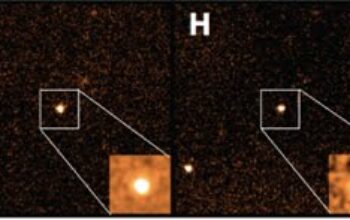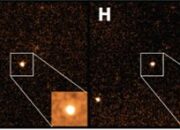Quantum computing represents a paradigm shift in our understanding of computation, transcending classical limitations through the principles of quantum mechanics. One of the most intriguing aspects of this domain is the transmission of data, which encompasses a realm far removed from the familiar pathways utilized in classical computing. In this exploration, we shall delineate the mechanisms facilitating data transmission in quantum computing, addressing the idiosyncrasies of quantum bits (qubits), entanglement, and quantum communication protocols.
To initiate this discourse, one might ponder: How does the extremely fragile nature of quantum states reconcile with the necessity for robust data transmission in quantum computing? This question not only highlights a critical challenge but also invites us to delve into the foundational constructs of quantum information theory.
At the core of quantum computing lies the qubit, the quantum analog of the classical bit. Unlike its classical counterpart, which can exist exclusively in a state of 0 or 1, a qubit possesses the remarkable capability of being in a superposition of states. This superposition imparts a dual nature to data representation, allowing information to be encoded in multiple states simultaneously. Consequently, the potential for transmitting vast quantities of data expands exponentially relative to classical systems.
However, this extraordinary property of superposition comes with a caveat: coherence. Quantum states are exceedingly delicate and susceptible to decoherence, which can obliterate the superposition and compromise data integrity. Therefore, for effective data transmission, strategies to maintain qubit coherence during transmission are imperative. Quantum error correction codes have emerged as pivotal tools in safeguarding data against such instabilities, providing robust frameworks to preserve quantum information even under unfavorable conditions.
As we navigate through the nuances of qubit transmission, we encounter the fascinating phenomenon of entanglement—a quintessential aspect of quantum mechanics. When two qubits become entangled, the state of one qubit becomes intrinsically linked to the state of another, regardless of the spatial distance separating them. This non-local connection poses a substantial opportunity for data transmission, as entangled qubits can be utilized to transfer information instantaneously, or at least seemingly so, across vast distances.
But, herein lies another challenge: the no-communication theorem. This theorem posits that, despite the instantaneous correlations between entangled particles, this phenomenon cannot be exploited to transmit classical information at superluminal speeds. Thus, while entangled qubits can enhance the efficiency and security of quantum communication protocols, they cannot directly convey information without the classical channels to interpret the outcomes. This intricately woven tapestry of interrelations illustrates the paradoxical nature of quantum data transmission.
Delving deeper, let us consider the hallmark of quantum data transmission: quantum teleportation. Quantum teleportation does not involve the physical transport of qubits but rather the instantaneous transfer of data encoded within their states. This extraordinary process utilizes the principles of entanglement and classical communication to achieve what may sound like a feat of science fiction. Initially, the sender and receiver must share a pair of entangled qubits. Subsequently, the sender performs a specific measurement on their qubit and the entangled partner, which collapses the state of the qubit being transmitted. The measurement results are communicated via classical channels, enabling the receiver to reconstruct the original state by implementing a unitary transformation on their entangled qubit. Through this sophisticated mechanism, quantum teleportation epitomizes a novel method for data transmission, albeit constrained by the limitations of classical communication channels.
As we observe this intricate interplay between qubits, entanglement, and teleportation, we are compelled to confront a pressing question: How can we enhance the reliability of data transmission in quantum networks, particularly as the demand for quantum applications surges? This convergence of quantum technology with classical infrastructure poses a unique set of challenges. The integration of quantum repeaters, which facilitate long-distance quantum communication by creating links between entangled qubits, emerges as a potential solution. By utilizing such repeaters, the effective transmission over extended distances operates analogously to classical repeaters, thereby ameliorating the distance limitations imposed by decoherence.
Another salient consideration within the realm of quantum data transmission is quantum key distribution (QKD). This protocol exploits the principles of quantum mechanics to achieve secure communication channels, unparalleled in their ability to resist eavesdropping. QKD employs the transmission of entangled qubits or a sequence of single photons, enabling the generation of secure keys based on the fundamental laws of quantum mechanics. The detection of any eavesdropping attempts manifests through the alteration of the quantum states, thereby signaling the presence of an intruder. This paramount characteristic of QKD fundamentally reshapes our conception of data security in communication, forging pathways toward unconditionally secure transmission.
In summary, data transmission in quantum computing represents an intellectual interplay of superposition, entanglement, and advanced protocols. The challenges posed by decoherence and the no-communication theorem juxtapose against the revolutionary potential of quantum teleportation and QKD. As we grapple with these complexities, the evolution of quantum networks stands at the precipice of redefining global communication systems. Our excursion into the realm of quantum data transmission invites reflection on the delicate yet formidable capabilities of quantum systems, posing profound implications for the future of technology and data security.









